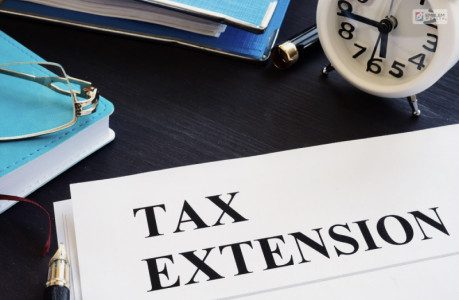Government Bonds: What They Are and How They Work in Your Investment Strategy

In simple words, the government bonds are loans that are made to the government. Meanwhile, the government uses the funds to construct a lot of public infrastructure. Afterwards, the government pays you assured returns with interest on your money.
You may be a seasoned investor. Or a novice in the game. But government bonds are for everyone. Let us explore the types of government bonds for you.
We can also try to understand which are the best bonds for you. The bottom line is that government bonds can boost your financial profile to a great extent.
Key Features of Government Bonds

Government bonds are one of the most sought after investment vehicles in the US and elsewhere. In the US, the average long-term government bond return in 4.24%. However most of the reliable bonds offer more than 10% returns.
And here lies the catch. Before choosing the right option for yourself, you need to know about the main features of the investment schemes in detail.
Coupon Rate (Interest Rate)
The upfront interest paid on the face value of the bond amount is the coupon rate. It usually varies between 5% to 6%. The government will pay back the percentage annually. Or divide it into a cluster of semiannual payouts!
Is the coupon rate fixed? No! It varies largely. However, there are fixed-rate bonds too. When you invest in these fixed schemes, you can calculate your returns accurately. However things change when you put your money in the variable rate bonds.
The return value of these bond schemes may later, based on the market conditions. Well, there are high chances that you may get potential returns, greater than the projected return value.
Maturity Date
The maturity period varies from one scheme to another. There are both short-term and long-term government bonds. Most importantly, you should pick one based on your personal risk appetite.
How to calculate the maturity date of your scheme? Well, it is the date when you are supposed to be repaid. But it is not a mandate. You may reinvest your return in the hope of a better or higher return.
Here’s a brief idea of the maturity tenures of different schemes:
- Short-term bonds generally come with a maturity period of 5 to 6 years
- Medium-term bonds can have a maturity period of up to 10 years
- Long-term bonds have much longer maturity periods. Some of them have more than 10 years of maturity tenure.
Face Value (Par Value)
That’s simple. It is the net amount that the government will pay you against your investment. Usually, schemes have a threshold face value of $1000 or its multiples. However, the purchase value of the bond is supposed to be different.
It all depends on the contemporary interest rate. When you get a favorable interest rate, it is better to book along long-term bond in your name. In 5 or 10 years, the return rate would go much higher.
Credit Rating
Credit rating is an important factor associated with the investment scheme. The same goes for the government bonds too. This rating detects the chance of the issuer defaulting.
Therefore, stable countries have high credit ratings. In other words, you have a 100% rating guarantee when you invest in stable countries.
The highest credit rating is AAA. However, the bonds in emerging countries might have lower ratings, on account of of higher risk quotients.
How Government Bonds Work
Understanding how government bonds work requires a look at their lifecycle—from issuance to maturity.
Issuance Process
Why does the government need loans? In essence, you should know that the government bonds are loans that the government takes from you. After that, the government uses the loan amounts for various public infrastructure projects.
Later, when your maturity period ends, you will get your return. But how does thegovernent issue bonds?
The commonest way is market auctions. You may directly buy bonds from the government websites that hold auctions. Or you can hire a capable broker to get the deal done in your favor.
Bond Pricing and Yield
There is an inverse relationship between bond prices and interest rates. When interest rates rise, the price of existing bonds falls, as recently issued bonds provide higher yields. On the other hand, when interest rates decline, the prices of existing bonds tend to rise.
Yield to maturity (YTM) can be a crucial measure for bond investors. It represents the overall return an investor can expect if the bond is held until maturity, considering the interests payable and possible capital gains or losses.
Interest Payments and Principal Repayment
The government pays bondholders regular interest payments (coupons) throughout the life of the bond. At the bond’s maturity date, the principal is repaid in full.
Why Invest in Government Bonds?
Government bonds offer many benefits, which investors like. Particularly those seeking stability and income. Well, here is a list of the best benefits that you can expect out of government bonds:
- Stability and additional security for your financial portfolio
- A better scope of portfolio diversification
- Another chance of a generous income generation
- More tax benefits compared to other government or private schemes
Government Bonds As The Best Investment Vertical
Government bonds can complete your investment arc. However, the things to look out for are:
- your risk appetite,
- your disposable income and
- the status of the people dependent on your income.
Role of Government Bonds in Different Portfolio Types
- People with low risk appetite can have government bonds for 80% of their portfolio. They can benefit from the right mix of short and long-term plans. So choose wisely.
- But a good profile has a bond with equities in a similar proportion. Firstly, bonds are the most stable option. However, stocks offer a generous return rate.
- Aggressive portfolios can consider government bonds as a hedge fund. When their stocks take a nosedive, the bond can save you. However, this formula works equally well for all investors.
Government Bonds as a Hedge
Government bonds are a safer asset option. Hence, a lot of investors may use it as a hedge option. Most importantly it can act as a cusion against the risks of the stock market.
When equities dont bring the desired results, you can buy more shirt term government bonds. For further details on building a diversified investment strategy, you can check out this content.
Conclusion
If you want to boost your finances, government bonds are one of the finest options for you. Firstly it will help you to balance your portfolio. Secondly, it can be one of the most prolific sources of additional income. However, government bonds can also diversify your financial profile.
It adds to the security of your profile. Also, it enables you to invest in other riskier schemes with higher return rates. But, as you know, there are risks in all investment schemes.
So, you must understand the issues with the government bonds, too. When you select the right government bonds for your profile, it makes you financially resilient. Check out the best options for you today.

























Leave A Reply